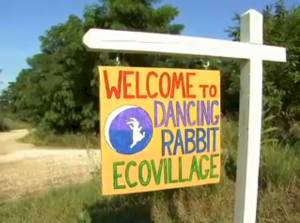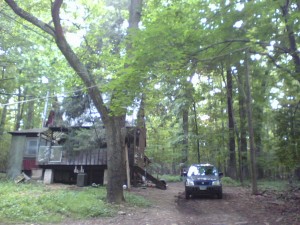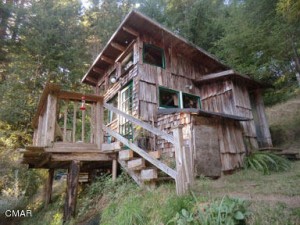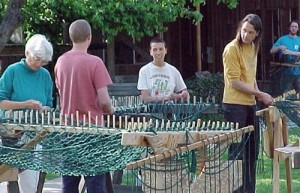In the Zone: Intentional Communities and Local Zoning Regulations
A member of my Facebook group, TRIBE: Choosing Intentional Community recently posted a very important question:
So, if someday I wanted to start thinking about buying land for an intentional community what kind of zoning should I be looking for, and what states would be good to look at? I’ve always wanted to try something like that but I don’t know where to start.
If you’ve been following my posts here or on Facebook, you may know I lost my home at Heathcote Community a couple of years ago, in part, due to zoning issues. Northern Baltimore County, where Heathcote has been in operation since 1965, Has evolved into one of the most regulated parts of the country.
Land Is Power
In my thoughts about IC’s and zoning, I make the assumption that community land is either held equally in common by all current members of the group, or held in some form of land trust.
If you’ve visited www.ic.org’s listing of Intentional Communities, you know that a lot of communities never get past the “forming” stage. As a matter of fact, about 90% of forming communities fail. Power imbalances like founders retaining ownership of the land are significant contributors to IC failures. Don’t make this mistake.

Missouri, home to Dancing Rabbit, East Wind, Sandhill, Red Earth, and the Possibility Alliance, currently has little zoning in rural areas.
Unregulated regions
Many parts of the country—remote sections of Kentucky, Tennessee, West Virginia, Arkansas and Missouri, of note, have little or seemingly no zoning. (Spiralwimmin Community in Kentucky is a case in point, and is currently for sale.) Often bare bones zoning requires a well and septic to be in place, whether you use them or not. And to make these areas even more attractive, land is magically cheap.
There are reasons. Available land is often mountainous and hard to farm, or blighted by logging, mining or fracking. Also, the surrounding communities in these cheap land/no zoning regions have few job opportunities. When I visited the thriving community of Dancing Rabbit in Missouri, I was clear that, in order to live there, I’d have to have some self-employment, such as software consulting, or live on savings.
I’m not familiar with other sparsely populated regions such as in Idaho, the Dakotas, and the Southwest. It’s possible that areas there haven’t been regulated yet.
I suspect that these regions won’t stay low or no-zoning forever. Like Heathcote in 1965, your perfect commune home in the Ozarks might see zoning put in place over time. And then you still have the problem, as Heathcote experienced a couple of years ago.
A challenge you may have in the meantime is that you may be surrounded by neighbors who also sought out affordable, zoning-free land, but for very different values than the ones you live by.
Writing Our Own Zoning Laws
Northern California is an area that has my attention. I’ve learned that many hippie communes formed as people migrated to Mendocino County from Haight-Asbury. As with any rural area the surrounding neighbors included supporters and people who took issue with the hippie shacks popping up without regard to codes.
It appears that these California communards, having some strength in numbers, became part of local governments, served on zoning boards, and by the 1970’s or 80’s they’d won a special zoning status, “Code K,” that allows DIY (owner built) structures to be built on a single property, to be subject to fewer inspections and meet some basic codes while being exempted from others. A great compromise!
As a person seeking to form a community myself, I am traveling soon to visit such a former community that is now for sale. It includes several of these Code K cabins, and was one of the great Northern California communes of the 60’s and 70’s.
Conforming in Our Community Designs
When the founders of Earthaven Ecovillage first designed their community, they took pains to create structures that would conform with local zoning laws. Now they’ve been informed that their legal
configuration doesn’t conform. They’ve worked with local officials and are embarking on a dramatic (read: expensive) restructuring. It would be great to have an Earthaven member write a post giving us more details! I’ll follow up on that.
Several egalitarian, or income-sharing communities are helped by their 501D status, which effectively means the IRS considers them monasteries. (Twin Oaks in Virginia is an example.) That helps with the question of unrelated adults living together, which was part of the equation at Heathcote, but any local zoning laws still have to allow monasteries.
Cohousing can be an attractive model to start a community that preserves much of the privacy Americans are used to while also fitting existing zoning regulations. Although I have many friends in cohousing and we consult regularly with cohousing groups, I don’t recommend the cohousing model. Of course, it’s easy to notice that cohousing is only an option for
communitarians who can afford to build. But another problem is embedded in one of cohousing’s zoning advantages.
A cohousing community is zoned as a development, a residential neighborhood. Zoning officials don’t concern themselves with the cooperative gardens or common buildings because each family unit has its own housing unit. That’s what they understand. But, unlike a 501D community, where members can be required to buy into the mission of the group, cohousing is subject to Fair Housing laws. When founding members die, divorce, move across the country for a job, etc., and units start to be sold, the sellers can’t legally require that the new buyers agree with the community’s values, or participate in community in any way. They can strongly request it, but they can’t require it. Across the US, as cohousing communities mature and ownership starts to change hands, members find themselves living with uncooperative new neighbors. I know of at least on cohousing development where the lack of common ground has spiraled into violence and restraining orders.
Taking up Our Space
My ideal vision is that we witness for ourselves to zoning authorities, take up our space at the table and win code variations that allow for our various forms of Intentional Community. But for tiny fledgling IC’s around the country, that’s a David and Goliath fight, one that feels like too much. Maybe someday we’ll organize as a movement and use collectivity to bring about desired zoning changes.
In the meantime, I’ve learned the hard way not to ignore these issues. When I first moved to Heathcote, members were already discussing concerns about legality and how we could evolve, from the DIY hippie shacks we’d inherited from previous incarnations of Heathcote, to a community safe from the threat that one complaint could leave members homeless. We lived under that question as we updated and made improvements, budgets permitting. Over the seventeen years I lived there, I’m amazed at how much we achieved. But some codes we couldn’t address with a hammer. And in the end, I had to leave my happy little hut in the woods.
To recap:
- Don’t privately own the land!!!
- Consider the egalitarian/income-sharing/501D thing.
- If you’re safe enough, advocate for zoning allowances in your area.
- Consider code K land in California.
- Don’t just leap and hope for the best, really!
Subscribe to this blog's RSS feed




